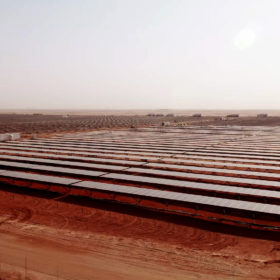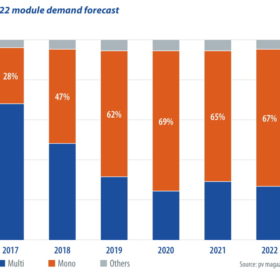MENA: Opportunity in diversity
MENA countries have made significant strides in recent years in the fostering of both large-scale and distributed solar market segments. However, some investors and developers may turn elsewhere for opportunities if there remains a predominance of large utility-scale projects dominated by a small number of players, writes Iwan Walters, a partner in the corporate practice of Eversheds Sutherland.
MENA PV additions quadrupled in 2018
As anticipated, 2018 was a pivotal year for PV installations in Middle East and North Africa, writes Josefin Berg, Research and Analysis Manager at IHS Markit. Our end-of-year estimates show that approximately 3.6 GW of PV systems were installed in the region in 2018, compared to less than 1 GW in 2017.
Financing Indigenous-partnered renewables in Alberta
Promoting the full inclusion of Indigenous peoples in Alberta’s renewable energy market is a key facet of the Alberta Climate Leadership Program. To achieve this, the Alberta Government has allocated CA$151 million, equating to around 2.8% of projected carbon levy revenues, to support Indigenous community participation in renewables over the next three years.
French PV project developers: Beware of protected species!
The regulations for protected species and the procedure to obtain a derogation are complex and should not be understated by solar PV project developers. The avoidance of the significant risks linked with those regulations requires technical and legal expertise, and support from the very beginning of the development of the project, write lawyers Anouk Darcet-Felfen and Laurence Duriez.
Revamping and repowering: The size of the opportunity
The concept of revamping and repowering is one of the newest terms in the solar industry. As the installed base of PV systems ages, the concept of upgrading and improving operating plants becomes increasingly relevant to both manufacturers and PV plant asset managers. However, the real market size for new PV components in existing plants will depend on the characteristics of each plant, the overall regulatory framework and the economic benefits that will accrue to asset managers.
Obscured policies in Taiwan’s FIT scheme to impact on sustainable development of local solar supply chain
The Taiwanese Ministry of Economic Affairs (MOEA) has announced a 10.17% decrease to next year’s feed-in tariff (FIT) rates for solar PV installations, which is much higher than the average decrease of 4.25% in the global PV industry. This will make 2019 a tough year for Taiwan’s PV industry, with wider-than-expected impacts on the whole market.
Positive signals from China boost 2019 forecasts
On November 2, China’s National Energy Administration held a symposium to evaluate the results of the 13th Five-Year Plan for solar PV development at its halfway point, discussing the adjustment of PV and thermal generation targets in the plan. As a result of this, there is renewed positivity regarding China’s domestic solar demand in 2019-2020.
A call to action
Solar PV has come a long way as a power generation technology. As highlighted in SolarPower Europe’s Global Market Outlook for 2018 to 2022, solar added 98 GW of net generation capacity last year, eclipsing all other forms of electricity generation. But solar needs to do a lot more, and to do it very soon if we want to limit greenhouse gas (GHG) emissions and keep global warming to below 1.5°C from pre-industrial levels.
Renewables 2.0: Preparing for the new complexity of renewable energy in a post-subsidy world
As the deployment of renewable energy continues to expand around the world, driven by various inputs, such as capital allocation and investment, falling capital costs, competitive LCOE and various policy mechanisms, we are now moving towards a new era for renewable energy. ‘Renewables 2.0’ will have significant, wide-ranging consequences for all market players, as regulators reduce their support and power producers seek new revenue models. In this article, Duncan Ritchie, partner at Apricum – The Cleantech Advisory, will look at the key market developments for renewables, explode the myth of grid parity, highlight the need for flexibility and explain the importance of new financing solutions that are capable of meeting the new complexities brought about by ‘Renewables 2.0’.
Low demand driving consolidation
With the release of second quarter financial results, the rankings of global module shipments in the first half of the year can be confirmed. JinkoSolar shipped 4.8 GW to take first place in this period.










